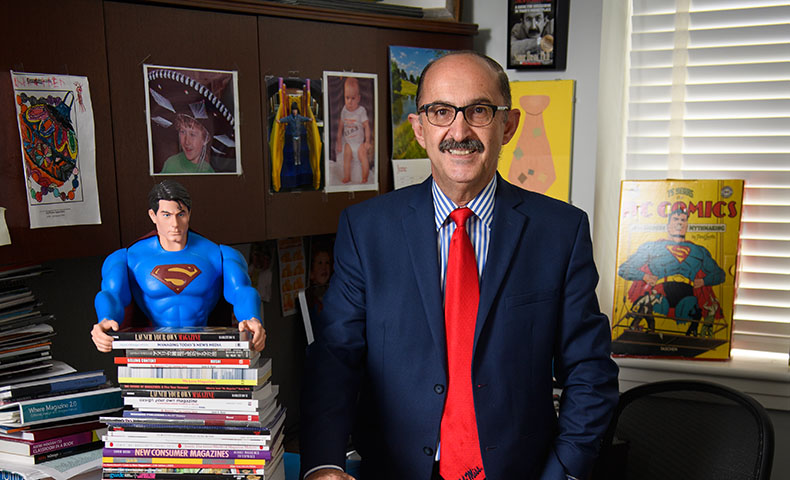
Photo by Robert Jordan/Ole Miss Communications
You know it’s a trend when they are interviewing Mr. Magazine about it. According to this article in Domtar, the two hot items in magazine publishing today are ones we’ve been covering a lot lately: the rise of niche publications, and the enthusiastic adoption of print marketing by digital brands.
As the article notes, Dr. Husni points out there are more magazine titles on shelves than ever before.
“When I came to America in 1978, I think we had around 1,500 or 1,600 titles available to the general consumer. Now, we have more than 7,000,” Husni said. “Are we selling more magazines than we did in 1978? No, because we don’t have TV Guide with 18 million subscribers, Reader’s Digest with 18 million or National Geographic with 11 million. But for every TV Guide that sold 8 million copies a week on the newsstands, we have maybe 1,000 titles today to fill that void.”
Much of this change has been made possible by digital printing, meaning short-run niche publications can match – and even exceed — the high-quality production standards of the mass-market brands.
“I remember the days when it used to take 10,000 copies to adjust color on press,” Husni said. “But now, technology makes it possible to print 500 copies. We’re seeing very niche, very specific magazines with press runs of 1,000 copies.”
What this does is create a magazine market catering to the hyper-focused fans of a particular niche.
“That’s why I advise publishers and even printers to invest in short-run digital presses,” Husni says. “That’s the future of the magazine industry.”
Beyond the niche interest, the second trend is too obvious to ignore. The rise of branded print magazines – by brick and mortar as well as digital brands – gives consumers a deeper channel in which to engage. As to the tired print vs. digital debate, Husni insists it’s more like a powerful partnership than an either/or.
“How can you say that you have a 360-degree brand if you don’t have all of the components?” he asks. “To have a complete brand, companies need to manifest on all platforms.”
Publishers, he believes, play an important role in all of this, having moved away from being solely content creators to content curators.
“The only way to engage your readers is to provide them with an experience in which they can lose themselves,” he insists. “A reader has to feel like a magazine was designed and curated with them in mind — and we have to make that happen.”
Lose yourself in a good magazine, and see what he means.
